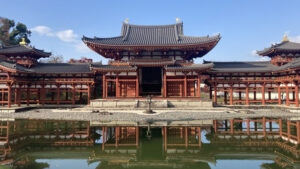Daikakuji Temple, Noble Elegance In Every Corner. Imperial Court Culture began Here
Daikakuji is an unparalleled temple that offers a glimpse into the refined court culture of ancient times. Floating a boat on the pond, intoxicated by the sound of wind and string instruments, and admiring the moon. Why does Daikakuji exude such an indescribable elegance in every corner? The answer lies in its rich history - the temple was originally a beloved detached villa of Emperor Saga, widely regarded as the pioneer of the Imperial Court culture.
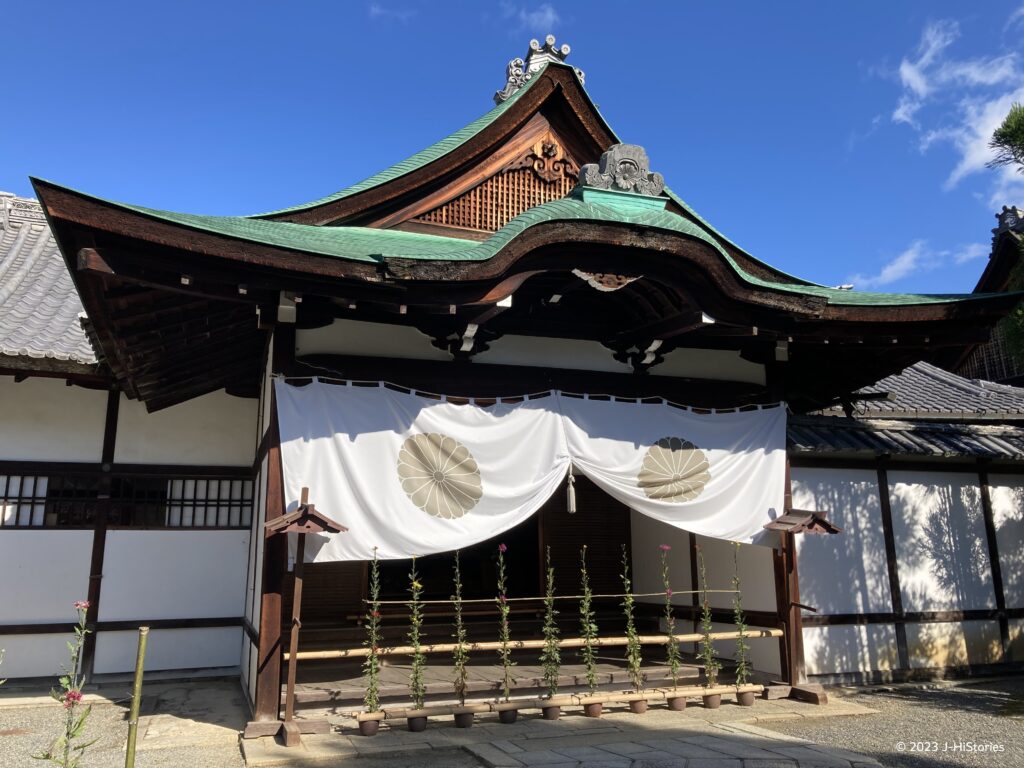
A Detached Villa of Emperor Saga Who Loved Sagano's Distinct
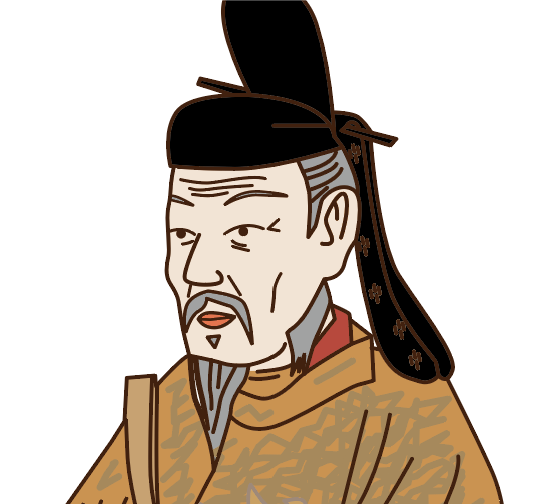
Daikakuji was purpose-built as the detached Imperial Palace called “Sento Gosho” (a residence of retired emperors) of the abdicated 52nd Emperor Saga (786-842, 嵯峨天皇) around 1200 years ago. It is located in Sagano distinct in the western area of Kyoto. Emperor Saga lived there with his wife calmly, enjoying the peaceful rural surroundings and the area's natural beauty, including Mt. Arashiyama, the bamboo groves, the cherry blossoms in spring, and the fall foliage covering Arashiyama.
Exudes The Elegance and Prestige of Imperial Culture
With its Karahafu design roof, the entrance hall is adorned with a purely white “Manmaku” (curtain) embroidered with the Imperial chrysanthemum crest, gently lifted by a pleasant breeze. The well-manicured green pine hedge catches the eye. Walking along the Murasame Corridor connecting several buildings, the view of the garden changes whenever you go straight, turn at a right, and continue straight again. The garden is varied and fascinating., leading to Japan’s oldest artificial Osawa Pond at the far end of the villa. The view from the moon-viewing pavilion is breathtaking.
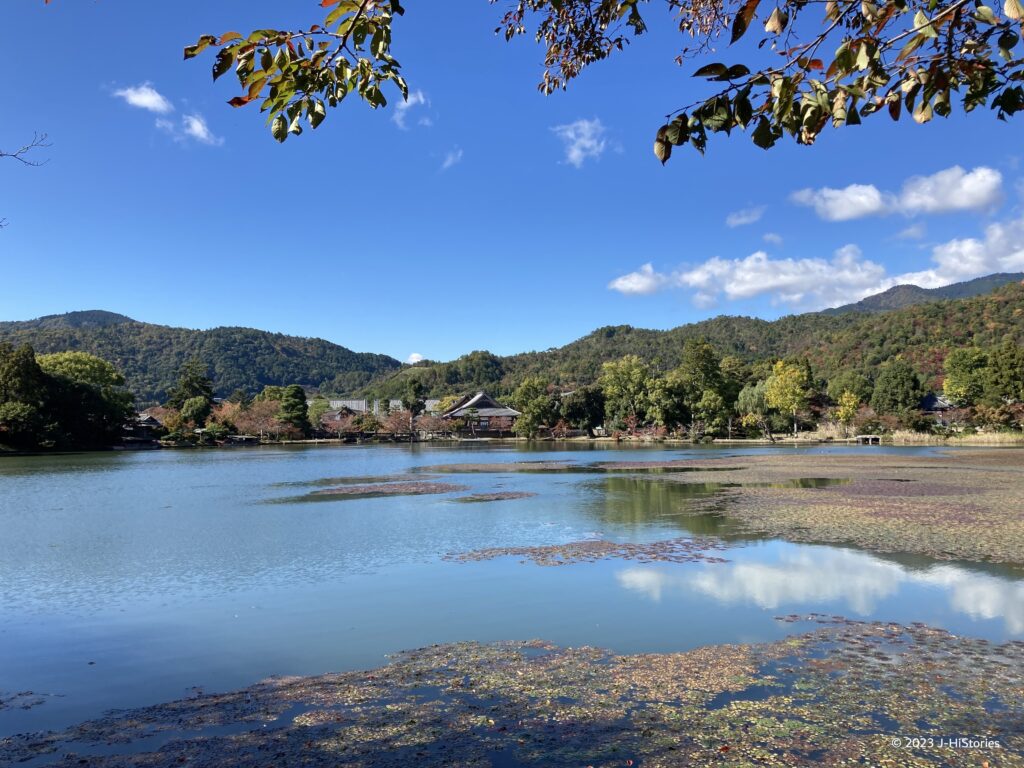
In spring, bright pink weeping cherry trees hang down over the slightly raised green moss in front of the Chokushimon Gate, purified with white sand. The combination of the three colors, pink, green, and white, is breathtaking. In autumn, a moon-viewing party is held in a boat on the pond on the night of the Harvest Moon. This is one of the three best moon-viewing parties in Japan. Its origin is said to be when Emperor Saga floated his boat in the shape of a dragon’s head and water-bird neck on the day of the full moon at Osawa Pond. The full moon shines in the night sky and reflects on the shimmering surface of the pond. Emperor Saga enjoyed poetry and music with cultural figures and aristocrats in this tranquil setting. The elegant and graceful Saga-giku Chrysanthemums added to the dignified atmosphere of Daikakuji. The flower arrangement is said to have originated when Emperor Saga hand-folded pretty chrysanthemums blooming on the small Kikuga-Jima Island in Osawa Pond and placed them in a bottle. Emperor Saga loved their appearance and fragrance.
Emperor Saga Encountered Challenges Shortly After Ascending to The Throne
Emperor Saga ascended to the throne in 809, in the capital of Heian-kyo in Kyoto, due to the illness of his brother, Emperor Heizei (774-824, 平城天皇). This was only 15 years after his father, Emperor Kanmu (737-806, 桓武天皇), had moved the capital from Nara marking the start of the Heian period (795-1185). Emperor Saga's tumultuous difficulty was the Kusuko incident, which occurred just 6 months after he acceded to the throne. Retired Emepor Heizei attempted to regain the position of emperor and moved to the former capital of Nara. At this point, two political powers stood in parallel: Emperor Saga in Kyoto and Retired Emperor Heizei in Nara. The tension between the two rapidly increased. As Retired Emperor Heizei raised an army, Emperor Saga blockaded Heian-kyo and quickly put down the rebellion with the Shogun Sakanoue-no-Tamuramaro.

Emperor Saga Laid The Foundation for The Nation In The Early Heian Period
He began his direct administration aggressively with the enactment of several measures. His policies encompassed a wide range of areas, including the establishment of a political system, the revitalization of the economy, and support for new religions. Specifically, Emperor Saga enacted several measures: (1) the establishment of the first Kebiishi (police and judicial chief) to maintain the peace and order in Kyoto, (2) the establishment of national rice fields and tea fields, (3) the demotion of many princes from nobility to subjects by granting them the surname Minamoto (the origin of Genji) to reduce imperial expenses, (4) the establishment of the “Saio” (the imperial lady to serve as a shrine maiden) at Kamo Shrine, and (5) the support of two young Buddhists, Kukai and Saicho, who were instrumental in the development of new Buddhism.
Built Intimacy With Kukai
Emperor Saga developed a close relationship with Kukai, frequently exchanging calligraphy and Chinese-style poems. Kukai would often visit Daikakuji from Jingoji Temple, which was only one hour's walk away. A notable symbol of their friendship is “Ryounshu”, the first anthology of Chinese poems in Japan ordered by Emperor Saga in 814. In addition to their connection, Kukai founded Shingon Esoteric Buddhism, which flourished in Kyoto with generous support from Emperor Saga. The main image at Daikakuji Temple is the "Godai Myoo" (the five great Myoo), a unique Buddha in esoteric Buddhism. The central figure, Fudo Myoo, holds a sword in his right hand to subdue demons, a rope in his left hand to save people, and a flame on his back to burn away vexation, all while wearing an expression. With these attributes, Fudo Myoo cuts off the wanderings and troubles to bring salvation to all.
As A Monzeki Temple, It Preserves The Court Culture
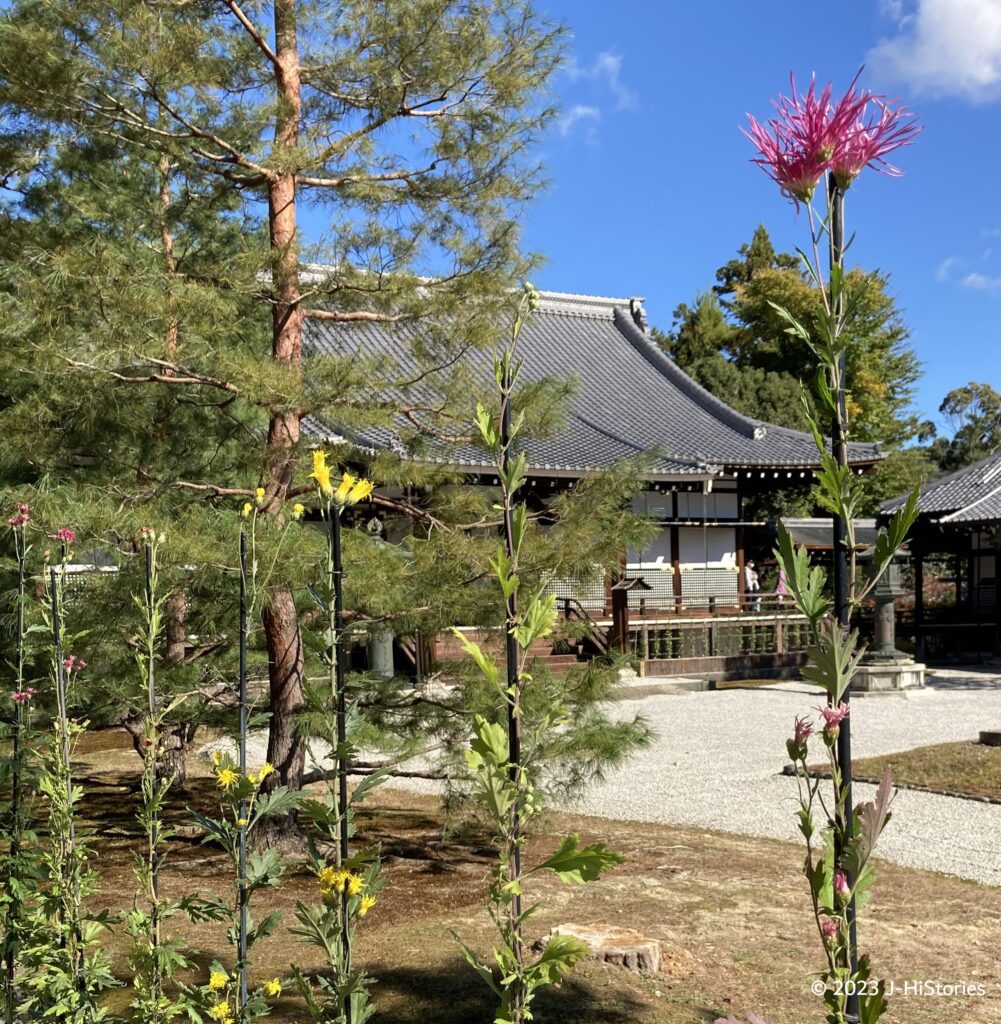
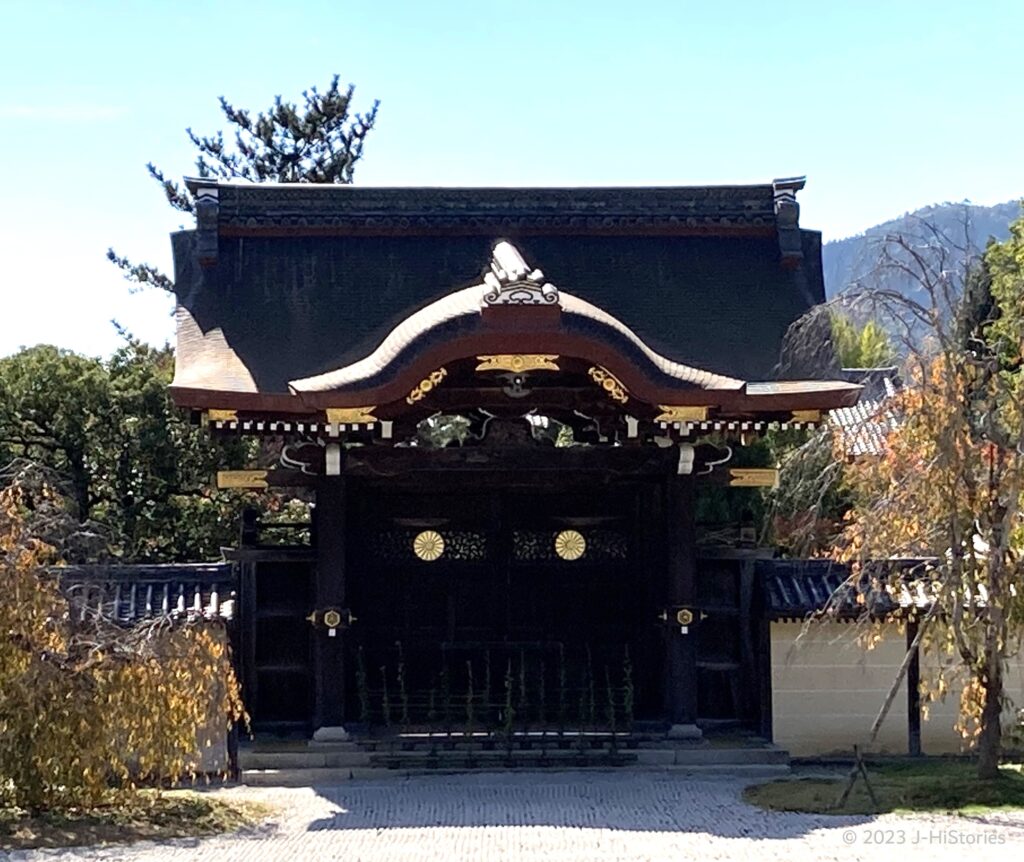
In 876, approximately 30 years after Emperor Saga’s death, his former Imperial Villa became the Daikakuji Temple. The temple belongs to the Shingon Buddhism sect founded by Kukai and is positioned as one of the Monzeki temples, whose head priests were traditionally members of the Imperial Family until the Meiji period. Visitors can enjoy the prestigious Daikakuji Temple, which exudes an imperial palace atmosphere with features such as Shinden (Emperor's residence) presented by the 108th Emperor Go-Mizunoo (1596-1680, 後水尾天皇), Chokushimon gate for the imperial messenger, Mie-do for Emperor Taisho’s banquet hall, and more. The temple hosts seasonal events that evoke the elegant atmosphere of court culture dating back to the era of Emperor Saga, including a moon-viewing party in September, and the Saga Chrysanthemum Exhibition in November. Plum and cherry blossoms in spring, water lily blossoms in summer, and the snowy scenery in winter are all incredibly beautiful and leave visitors at a loss for words.
Emperor Saga Timeline
| Emperor Saga was born | Age=1 | Nara Period |
| The relocation of the capital to the city to Heian-kyo in Kyoto | 9 | Heian Period |
| Emperor Kanmu passed away, Emperor Heizei ascended the throne | 21 | |
| Emperor Heizei abdicated and Emperor Saga ascended the throne | 24 | |
| Kukai conducted the incantations for the protecting nation. | 25 | |
| Kusuko incident occurred | 25 | |
| Kukai was given Koyasan by Emperor Saga | 31 | |
| Kukai was given Toji Temple by Emperor Saga | 38 | |
| Enryauji Temple name was given by Emperor Saga | 38 | |
| Kukai entered the next world or passed away | 50 | |
| Emperor Saga passed away | 56 |
Recommendations to visit
- Access: 16 minutes from JR Kyoto Station to Arashima Station (JR Sanin-Main Line). Take bus #91 bound for "Daikakuji (大覚寺)”, then a 1-minute walk.


